Project: "The first steps in animation or how to create a cartoon yourself. Project: Multi-Pullets Studio. Creating a cartoon" Sagalgan - Holiday Light and Good "
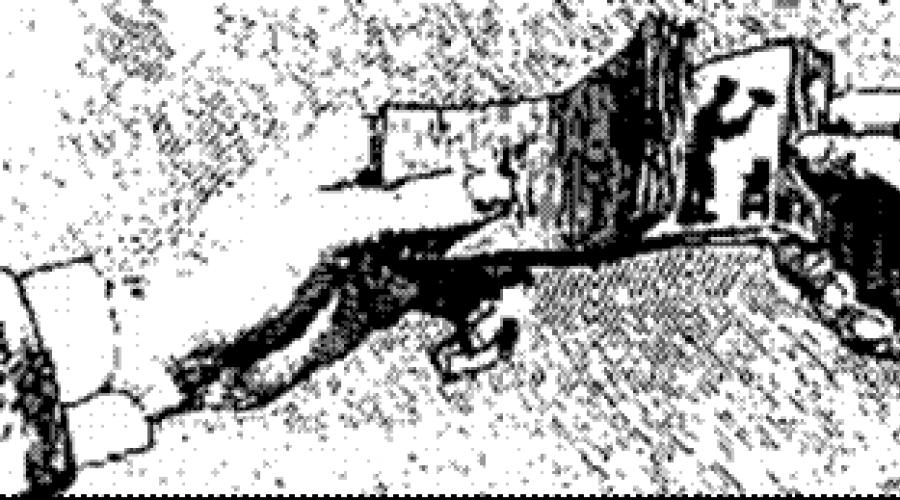
Hypothesis:
We suggested if the secrets reveal creating cartoons, and there will be available technical support, then create a cartoon is available even to a child.
Subject of study: Animation
Methods:
- Search for information on the Internet
What is animation?
Animation - (from lat. Multiplicatio) - multiplication, an increase is the process of creating moving images.
The term "multiplication" is used exclusively in Russian cinema as a synonym for the term "animation". Translated from Latin - "Anima" means "soul". So "animation" is nothing but the "revival" or "animation".
Animation, animation, multiplication cinema, animation cinema - type of cinema, whose works are created by a framework of consecutive hand-drawn motion phases ( graphic or drawn volumenny or puppet Multiplication) objects.
History of animation
And in 10-11 centuries. - There were shadow ideas that were very similar to future cartoons.
On August 30, 1877, it is considered the birthday of hand drawn animation - the invention of Emil Reno was patented.
An animation is considered to be the branch of the film industry since its appearance. However, this interesting destination can also be successfully associated with painting and graphics. The artist's talent plus technical capabilities - and the art is born, which does not leave indifferent or children or adults.
The roots of the emergence of animation are associated with a stroboscope - an optical toy invented by the Belgian inventor Joseph Plateau in 1932. The principle of this device was simple - a cyclic pattern was applied to the edge of the circle. For example, a running horse, which was depicted several times in different stages of movement. When rotating the circle, the drawing merged, and the illusion of the moving object arose.
But the real first cartoons appeared only at the beginning of the 20th century. They were black and white, images - angular and clumsy. The first cartoons were "dumb".
Next, the development of animation, as well as cinema, passed in France. Emil Kohl is another bright director and artist, starting his activities from acting. In 1908, he created the first animated films. They resembled drawn comics, only in motion. Emile Kohl drew thousands of drawings to revive them. He sought to achieve realism, copying real objects, and even used a photo. His legacy modern multipliers consider valuable.
Vladislav Oldevich Created the first doll cartoon called "Beautiful Lucanide, or Roga and Usach War." This figure was famous for his love for insect. He took off the lot of films, they dedicated, and they looked on the screen very naturally. Vladislav Rasheevich - a subtle psychologist and talented painter. He cared not only about the pictorial side of cartoons, but also filled them deep meaning.
Having studied, we understood the story
. Classification of cartoons
Classification of cartoons today is large enough, so we will focus on the most priority and known
For purposes:
familiarization;
entertaining;
computer.
powder.
By duration:
By age interests:
For kids;
For teenagers
For adults.
Practical part
i do not care
hate
modern Russian,
overseas
old Soviet
colorfulness
special effects
modern russian cartoons - 75%
foreign - 18%
old Soviet - 7%
meaning - 75%
special Effects -10%
colorfulness - 15%
The most favorite cartoon: "Three heroes", "Ivan -TSarevich and grey Wolf» ,
Developing characters.
Preparation for shooting.
1. Camera setting: To shoot a cartoon, we chose the very camera small size Frame 640 × 480. It is necessary so that the cartoon occupies little place in memory.
2. Installing the camera to tripod: At first we were not aware of the need for a tripod. The first cartoon shots we shot out of the position, standing on top over the background. After they decided to check what happened, they were disappointed, as they saw the cartoon jumping frames, from which the eyes were tired. Since we did not have this tripod, adults made us a homemade tripod from the books.
3. Selecting the height and tilt tripod: the camera on the tripod we fastened so that in the lens there was only a background of the future scene, and nothing excess in the frame fell. Now we were sure that our cartoon's frames will not jump on the screen.
What is the frequency of frames?
Useful advice when shooting.The camera is assigned. The tripod does not move. You can start shooting. Move the shapes need to be "slightly" and in the right direction. The figures on the screen can move simultaneously. It is necessary to monitor that during the shooting in the frame there were no extra details - mostly drawing hands.
Important!
Film processing using video studio video studio in Windows 7
After the filming of the cartoon frames, we moved them to a computer. There they had to be processed special program. We chose popular program The video editor of the film studio in Windows 7 to create cartoons in it is completely simple .. But counted that for the first time and it is not bad.
4) watching a cartoon.
Conclusion
Filming cartoons - very painstaking work! Based on our work, you can draw the following conclusions:
2 .. Cartoon filming is a very painstaking job!
3. Knowing the main secrets of creating cartoons, if available technical support, you can create your own cartoon.
Thus, we managed to achieve our research goals. The hypothesis confirmed at the beginning of the study by us. The knowledge gained during the study allowed to increase the interest of the surrounding animation
View the contents of the document
"Introduction"
in the field of "art"
Subject. Cartoon secrets.
Creature cartoon film.
Performers
Pupils 3 "b" class
gymnasium № 205 "Theater"
Yekaterinburg
Introduction …………………………………………………… 1
Main part
What is a multiplier ................................. .. 3
History Cartoon ........................................ four
Classification of cartoons ........................... .. 9
Practical part
Questioning ...................................................... 11.
Stages of creating an animated cartoon ................ 13
The process of creating a cartoon .................................... fifteen
Conclusion .................................................................. 18.
List of references ...................................................... .. 19
application
Introduction
What do children love most about the world? Well, of course, candies and cartoons! Interesting cartoons, like delicious candy, never bored - any child will tell you.
And we also very, very love to watch cartoons. Looking for moving pictures on the screen, we wondered: how do you come to life for your favorite characters? And we wanted to create our own cartoon.
But how to create it? Where to start? What are the secrets of creating cartoons? To get answers to the questions exciting us, we decided to conduct a study.
purpose : Find out how "the drawings come to life"
Create your first cartoon
Tasks:
Explore the history of creating animation
Conduct cartoon classification
Conduct a survey of students, in order to identify the most preferred cartoons and their heroes;
Examine the process of creating a cartoon and create your own.
Hypothesis:
We assumed
if you reveal the secrets of creating cartoons,
and will be availability of available technical support,
That creating a cartoon is available even to a child.
Subject of study:
Animation
Methods:
Search for information on the Internet
View video creation of cartoons
Comparison, observation, analysis of the information received
Creating your own cartoon
MAIN PART
What is animation?
Animation - (from lat. Multiplicatio) - multiplication, an increase is the process of creating moving images.
The term "multiplication" is used exclusively in Russian cinema as a synonym for the term "animation". Translated from Latin - "Anima" means "soul". So "animation" is nothing but the "revival" or "animation".
Animation, animation, multiplication cinema, animation cinema - type of cinema, whose works are created by a framework of consecutive hand-drawn motion phases ( graphic or drawn animation) or volumetric ( volumenny or puppet Multiplication) objects.
Multiplodes (animators) are engaged in art animation
History of animation
Man always tried to reflect the movement in his drawing. The first attempts to transfer traffic in the figure are about 2000 to our era (Egypt).
Figure: Image of two fighting people. Egypt 2000l. BC.
There were statements that these drawings need to be called the first examples of animation, however, it is not quite true, because there was no equipment that can show these drawings in motion.
![]()
XV century - There were books with drawings reproducing various phases of the movement of the human figure. Rolled into the roll, and then instantly unfolded, these books created the illusion of the revolving drawings.

And in 10-11 centuries. - There were shadow ideas that were very similar to future cartoons.
On August 30, 1877, it is considered the birthday of hand drawn animation - the invention of Emil Reno was patented.
An animation is considered to be the branch of the film industry since its appearance. However, this interesting destination can also be successfully associated with painting and graphics. The artist's talent plus technical capabilities - and the art is born, which does not leave indifferent or children or adults.
The roots of the emergence of animation are associated with a stroboscope - an optical toy invented by the Belgian inventor Joseph Plateau in 1932. The principle of this device was simple - a cyclic pattern was applied to the edge of the circle. For example, a running horse, which was depicted several times in different stages of movement. When rotating the circle, the drawing merged, and the illusion of the moving object arose. 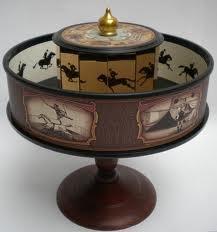
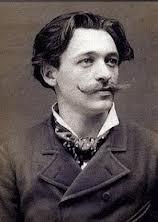
The first real multiplier is considered the Frenchman Emil Reyno. He created the apparatus Prasinoscope, which consisted of a spinning drum, a system of mirrors and a lantern. In 1892, Reyo launched a kind of attraction - an optical theater. There he demonstrated the audience comic plots lasting 15-20 minutes.
It happened a few years before the famous Lumiere brothers premiere, that is, the cartoon became known to the French even a little earlier than the movies.
But the real first cartoons appeared only at the beginning of the 20th century. They were black and white, images - angular and clumsy. The first cartoons were "dumb". 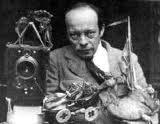
Next, the development of animation, as well as cinema, passed in France. Emil Kohl is another bright director and artist, starting his activities from acting. In 1908, he created the first animated films. They resembled drawn comics, only in motion. Emile Kohl drew thousands of drawings to revive them. He sought to achieve realism, copying real objects, and even used a photo. His legacy modern multipliers consider valuable.
Another bright name In the history of animation associated with Russia. In 1912. Vladislav Oldevich Created the first doll cartoon called "Beautiful Lucanide, or Roga and Usach War." This figure was famous for his love for insect. He took off the lot of films, they dedicated, and they looked on the screen very naturally. Vladislav Oldeevich is a subtle psychologist and a talented artist. He cared not only about the pictorial side of cartoons, but also filled them with a deep meaning.
In Japan, the first experiments with the animation began in 1913, and in 1917 there were animated films long from 1 to 5 minutes.
If in Europe, the filming of movies passed in a practically handicraft, then in America with a technical base, everything was much better. Walt Disney appeared here, which in 1929 he took off his first hand-drawn cartoon with the musical accompaniment of the "skeleton dance". Disney is considered by the father of animation, his work deserves a separate story, because only the Oscar premium he received 30 times. His experience takes as the basis and today.
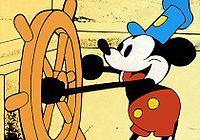
1928 - Walt Disney creates the most popular hand drawn character in the history of animation - Mickey Maus. In the same year, his first sound animation comes out in 1940 - in America, the production of the series "Tom and Jerry" is beginning.
ion film "Village Willy"
Subsequently, the Master of Cinema introduced another interesting technology - combining the game of live actors and animated heroes.
In Russian animation, Alexander Viktorovich Shiryaev is considered the first. It was in 1906. Each movement in the handmade scenic box in detail sketched on a narrow paper tape. It turned out a kind of storyboard. If they are played on the screen, it will be released with modern measurements. Multiplication.
In 1936, a special studio of hand drawn films "Soymmultfilm" was created in Moscow by decision of the government. At this time, in their works, multipliers artists begin to master the color.
In 1950, the first experiments with a computer generated image are held.
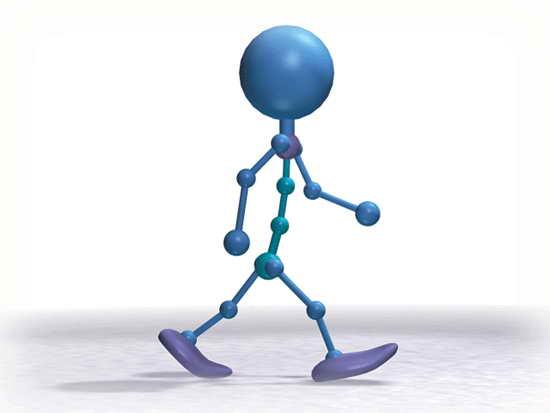
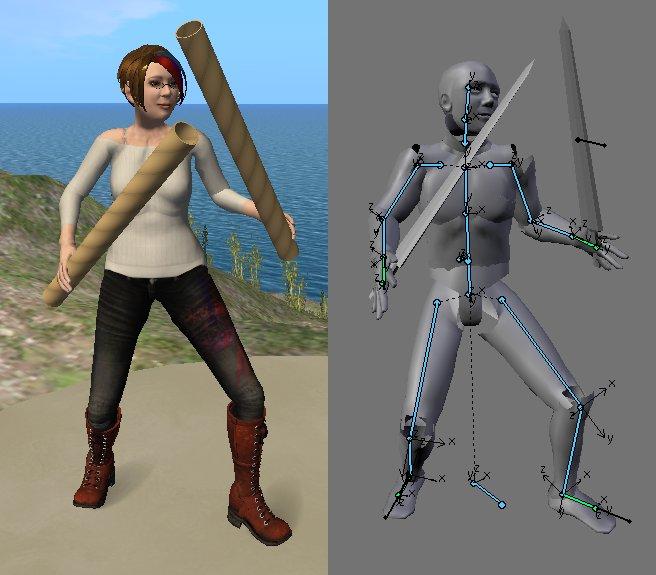
Today, computer animation has been widely used and gradually replaces all other technologies. Sometimes computer graphics It is transferred to the film. Under computer animation also imply CGI (eng. Computer-generated imagery, letters. "Images generated by a computer"), i.e. Special effects created on a computer.
More and more is created cartoons in 3D. For 3D scene animations and objects are modeled on a computer (a three-dimensional scene model and objects are created, with a geometric projection of the model on the plane, i.e. computer screen), the figures have a virtual skeleton. After rendering (visualization), i.e. Build a projection in accordance with the selected physical model. Next, the image is displayed.
Computer animation began to be used in the 90s
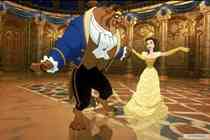
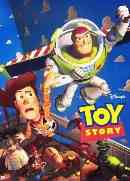
Having studied, we understood the story
What is routing and how with its help can be given in the movement of heroes
. Classification of cartoons
Cartoons occupy one of the central places in the world of cinema. Because in the cartoons are initially laid beneficial features:
the relationship of fantastic (magical) and real (dreams in the head are implemented on screens);
brightness of cartoon material and laconicity ( bright images attract attention, and the prostate of the plot supports interest);
the presence of good and evil (only in cartoons, as a rule, there is always a happy finale in an unequal struggle of good and evil forces);
fabulous world (come to life even inanimate objects).
The classification of cartoons today is large enough, so we will focus on the most priority and well-known.
Separate cartoons by country producers:
american (Walt Disney Cartoons);
french (for example, "Feline Soup", "Mousetail");
japanese (Anime) ("worn by ghosts", "My neighbor Totoro");
Russia (USSR) ("Kid and Carlson", "Well, Wait", "Ivan Tsarevich and Gray Wolf");
czech ("UPS, error", "critting");
german (Snow White, "Message");
english ("PET Postman").
For purposes:
educational (the meaning is as follows: Cartoons must change knowledge, attitude or behavior of watching);
developing (such cartoons are aimed at the development of the person);
educational (model behavior system);
teaching (improvement of knowledge and their systematization);
cognitive (educational function);
familiarization;
entertaining;
rhetorical (problem) (help to think about the surrounding problems).
drawn. The first cartoon films were precisely such as they did not require film equipment, so they appeared long before the appearance of cinema. In such a technique, Walt Disney was worked. Now this method Most uses the production of Japan.
computer.
puppet. Forward appeared in Russia. Famous cartoons: "Cheburashka", "Mitten", "Corpse of the Bride".
plasticine. "Plasticine Crow."
sand. The use of any bulk materials.
powder.
By duration:
Short (duration up to 45 minutes);
Full-length (more than 45 minutes).
By age interests:
For kids;
For teenagers
For adults.
Practical part
Profile
Do you like to watch cartoons? (emphasize the answer)
i do not care
hate
What cartoons do you like? (emphasize)
modern Russian,
overseas
old Soviet
What is the main thing for you in the cartoon?
colorfulness
special effects
What is your favorite cartoon? _________________________
Do you know when and where did the first cartoons appear? __________
How are cartoons are created? _______________________________
After analyzing the questionnaire, we came to the conclusion that most children (Appendix1) adore watch cartoons (45%.), Love (20%) Some look at them sometimes (15%.), And only 5% do not like to watch cartoons (boys). So most children love to watch
The guys who like cartoons like, indicated that more often watch (Appendix 2):
modern Russian cartoons - 75%
foreign - 18%
old Soviet - 7%
The main thing in cartoons for them is (Appendix3):
meaning - 75%
special Effects -10%
colorfulness - 15%
The most beloved cartoon: "Three heroes", "Ivan Sarevich and a gray wolf", "Smeshariki", etc. (Appendix 4)
When and where did the first cartoons appear? How are cartoons are created? Children did not respond at all. So do not know. To the question: you would not like to create a cartoon yourself, everyone answered great desire.
The questionnaire helped us determine what movie we need
Children, but with meaning
Entertaining but modern
Plasticine.
Short
Stages of creating animated films
An animated film is not just a sequence of pictures, it is a story, invented and played by the director for the audience.
In order to tell the story it is interesting that the viewer does not have questions for a storytellor, the director needs to be well prepared for the story.
After reviewing several multipliation videos, we realized that the creation of a cartoon is a long, time consuming process.
Producer determines total bannerThe scripts are developing the plot and the script, which is then divided into episodes and scenes illustrated by the series of sketches.
The director distributes the scenes between multiplier artists. Each of them is responsible for the main positions of the characters in the scene. Intermediate episodes draw the younger multiplers. Other artists are preparing the background on which the action unfolds. Contour drawings Transmitted for coloring, transferred to transparent plastic and put it with pen or ink. In the event that color is used, it is applied on reverse side Plates.
Then the operator frame photographs drawings using a special chamber.
Then the animation is made (revival).
Actors voiced film characters.
Finally, the sound engineer synchronizes the sound with the image.
Music can be written by a composer specifically under the image, and it may be that the image is drawn and mounted under the already written music
So, we allocated the following
stages of creating a cartoon film:
1. Selection of plot
Everything starts with the idea. It can be as simply by someone who came to someone's idea and a competition of ideas or ordinary brainstorming. When the idea is ready, it is necessary to make an outline of portraits of future heroes, landscapes, scenes and film scheme. Created sketches or paintings are used to clarify the plot of the future film.
2. Writing a script
Creating a film begins with a detailed written filmceneuria. You need to show how each scene will look in the film.
3. Creating characters and settings
After writing the script, you need to draw or simply make a storyboard on scenes and in time.
4. Movement
Collect the cartoon: work out the animation, i.e. the character movement, using computer technology.
5. Selection of audio
Start voice actuator: connect the microphone, turn on the entry on the sound track, voice the characters.
6. Sound connection with the image
Synchronize the image with sounding.
7. Creating a screensaver and ending
They will help you to start brightly and effectively finish your film.
The process of creating a plasticine cartoon.
Writing a cartoon script. We decided to create a plasticine cartoon for famous fairy tale "Kolobok". During the scenario, Kolobok himself tells about his adventure. Spoke about a meeting with a hare, wolf, a bear. But the meeting with the fox was tragic.
Developing characters. To create a cartoon, we have prepared the following plasticine characters: Kolobka, hare, wolf, bear, fox. Made the necessary scenery: grandmother's house with grandfather, clouds and touches, sunshine, trees, path.
When the characters were ready, we made the background: the white plastic sheet was taken as the basis, the sky was painted gouache paintBecause on this material it is very convenient to have a cartoon characters, it is easy to shift them from place to place, if necessary, you can always clean the blurred sheet.
Preparation for shooting.
1. Camera setting:To shoot a cartoon, we chose the smallest frame size 640 × 480 on the camera. It is necessary so that the cartoon occupies little place in memory.
2. Installing a camera for a tripod:At first we were not aware of the need for a tripod. The first cartoon shots we shot out of the position, standing on top over the background. After they decided to check what happened, they were disappointed, as they saw the cartoon jumping frames, from which the eyes were tired. Since we did not have this tripod, adults made us a homemade tripod from the books.
3. Selection of height and tilt tripod:The camera on the tripod we secured so that in the lens there was only a background of the future scene, and nothing excess in the frame fell. Now we were sure that our cartoon's frames will not jump on the screen.
What is the frequency of frames?
The cartoon is created from the sequence of pictures (frames).
Frame rate can be different (in professional cinema is from 12 to 30 frames per second).
The creation of plasticine cartoons is quite laborious. Given that 2 frames account for 1 shot, then for one second cartoon you need to take 12 pictures (because speed is 24 frames / sec.). Accordingly, it is necessary to change the object 12 times to remove 1 second.
Useful tips when shooting. The camera is assigned. The tripod does not move. You can start shooting. Move the shapes need to be "slightly" and in the right direction. The figures on the screen can move simultaneously. It is necessary to monitor that during the shooting in the frame there were no extra details - mostly drawing hands.
Important! The shooting site and the camera must maintain their position over the entire shooting. It is impossible to move a tripod and a camera on it.
Film processing withvideo editor Cinema B.Windows 7
After the filming of the cartoon frames, we moved them to a computer. There they had to be treated with a special program. We chose a popular program video editor Cinema B.Windows 7 Create cartoons in it is completely simple .. But counted that for the first time it is not bad.
4) View cartoon . And this long-awaited hour came, which we waited so long. Many times we looked through our favorite first cartoon.
Together with us, our other classmates created other cartoons.
"The story of the beasts" "On the Terrible Tuchka"
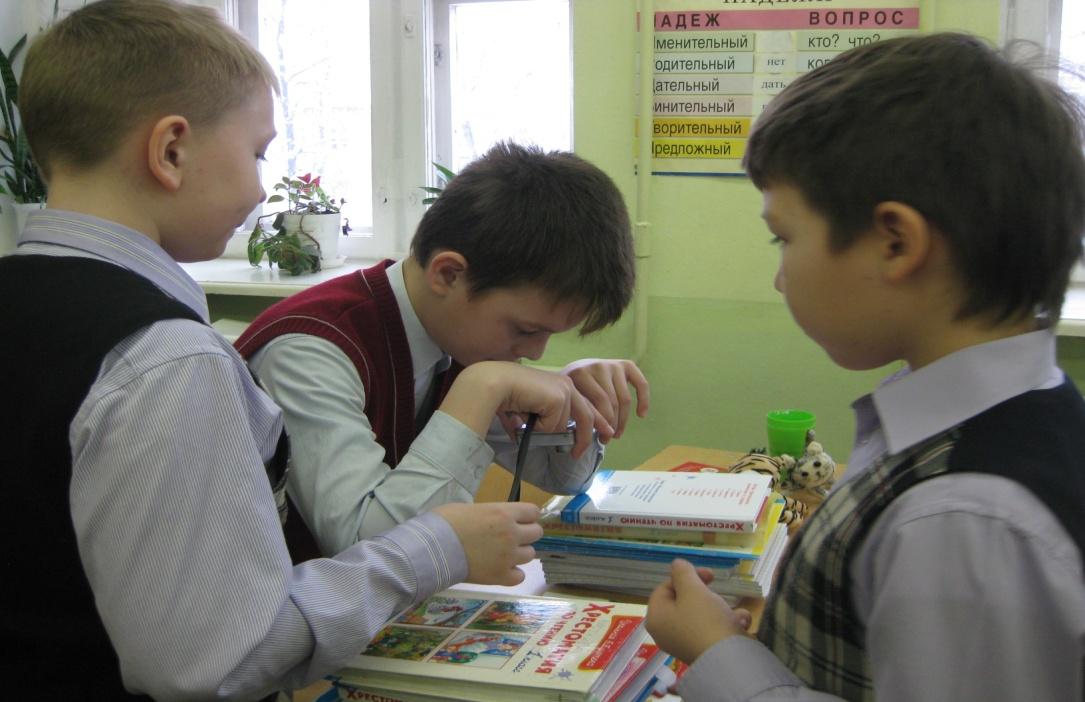
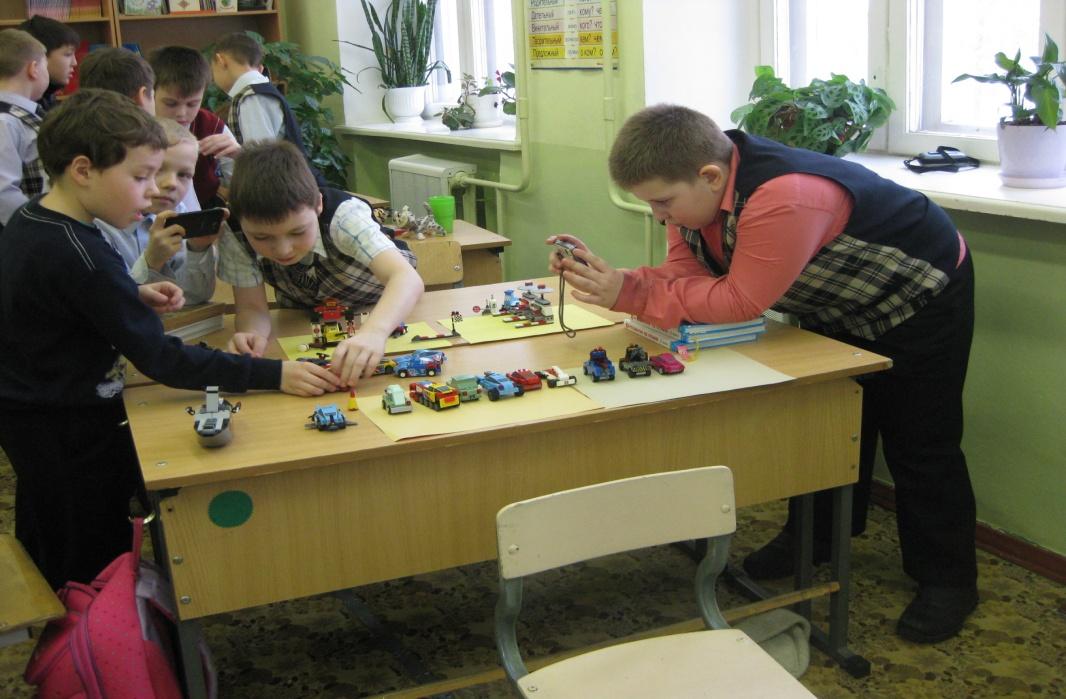
Conclusion
Based on our work, you can draw the following conclusions:
1. Since the release of the first cartoon has passed more than 100 years, but their popularity does not fade.
2.. Filming cartoons - very painstaking work!
3. Knowing the main secrets of creating cartoons, with available technical support, You can create your own cartoon.
Thus, we managed to achieve our research goals. The hypothesis confirmed at the beginning of the study by us. The knowledge gained during the study allowed to increase the interest of the surrounding animation of animation.
In the future we want
Create cartoons with fictional heroes
Find out how cartoons affect our consciousness, the consciousness of all children.
Bibliography
What. Who it. In 3t. T.2 - 3rd Edition, recycled and supplemented - M. Pedagogy - Press, 1992
I. Ivanov-Vano-drawn film - M.: Goskinoizdat, 1950
Anna Milborin I draw cartoon - M.: Eksmo, 2006
Used resources:
http: //xn----9sbmlcancehc7el2iuaw.xn--p1ai/info/znachenie_slova_multiplikaciy.html
http://www.myltik.ru/index.php?topic\u003dInteres/history.
Type of project - Long-term, joint children-parent creative project.
Project participants: Team teacher, children, parents.
The essence of the project: Molding and using the skills of modeling, drawing, designing, execution of appliqués and crafts, children make characters and scenery for games, performing performances and shooting cartoons.
Purpose: Remove the secrets of creating cartoons. Create a cartoon with your own hands.
Hypothesis: We suggested that if we reveal the secrets of creating cartoons, we can create your own cartoon yourself.
Tasks:
Educational
- To acquaint children with the history of the emergence and development of animation.
- Introduce children with multiplication films technology.
- Expand the knowledge of children about professions: screenwriter, director, multiplier artist, operator, sound engineer.
Developing
- Develop creative thinking and imagination.
- Form art skills and skills.
- Form the skills of connected speech.
Raising
- Rise interest, attention and sequence during the creation of a cartoon.
- Rail a aesthetic feeling of beauty and harmony in life and art.
- We instill a responsible attitude towards your work.
Forms of work:
- View the "Soyuzmult Film" presentation.
- "Cartoon Wizards" (familiarity with professions: screenwriter, director-multiplier, multiplier artist, sound engineer, operator, etc.)
- "Cartoon Secrets" (acquaintance with the world of animation).
- "Game - a trip to the station of the country of the Multi-Putty."
- Viewing videos "Meeting with a cartoon and artist Malyavin."
- View cartoons (acquaintance with cartoons: plasticine, drawn, puppet).
- Conversations "The History of the Cartoon", "How to remove the hand-drawn cartoon", "what are the cartoons".
- "Travel to the past is the childhood of parents" (alternative to the cartoons were diamers).
- Viewing Films.
- Experimentation with paints - Getting different shadesBy adding white paint.
- Work on the background using unconventional methods drawing.
- Work on the scenery to the cartoon using unconventional drawing methods.
- Lrack heroes from plasticine.
- Drawing "Favorite Cartoon Hero".
- Drawing stories in pictures (inventing stories and drawing up mnemotable "young scenariors").
- Mysteries on cartoon characters.
- Quiz "Connoisseur of cartoons", "in the country of multi-pulse."
- Drawing vegetables on a tray, compiled by a semit.
- "Vegetables on the garden" - the plasticography method.
- Work on the screensaver, the ending - microGroups.
- Shot of the screensaver.
- Retelling fairy tales, telling on roles.
- Drop the fairy tale.
- Drawing up the story on behalf of the subject "revived subjects."
- Games "Journey to the world of emotions" (the ability to distinguish the emotional states of the characters); "Guess the character on facial expressions and gestures."
- Record fairy tales.
- Consultations for Parents "Cartoon Secrets", "Methods and Receptions non-traditional ways drawing. "
Stages of work:
- The choice of theme.
- Setting goals.
- Nomination hypothesis research.
- Search for multiplication material.
- Survey of children on this topic.
- Studying the history of animation.
- Types of cartoons.
- Studying the process of creating a cartoon.
- Development of a cartoon work algorithm.
- Preparation of materials and equipment necessary for the implementation of the project.
- Creature creative group Parents interested in this topic.
- Immersion in a fairy tale.
- Striping.
- Development and creation of characters and scenery.
- The revival of the characters.
- Foaming the plot.
- Cartoon shot.
- Installation of the footage on the computer.
- Sound (role distribution).
- Determining the formation level of generalized training skills.
- Cartoon premiere. View (work outfit).
- Final exercise on the topic "Manufacturing of posters".
- Parent meeting on the topic "Children and animation".
- Presentation of the project.
Expected Result:
Within the framework of the project "Cartoon DIY", children received certain knowledge, skills and skills:
Manifestation of emotional responsiveness, development of thinking, imagination, the ability to express their feelings with the means of art.
Development personal qualities: independence, initiatives, mutualists, involvement with common cause, responsibility, respect for each other, self-esteem.
Development of communicative skills, manifestations of creative independence, activity in creating an image, development small Motoriki Hands, the ability to show your talents. This gave a new impetus gaming activities, Children borrow fabulous stories And they are starting to make the masters of heroes for their games.
In this way, using project activities gives us the opportunity:
- encourage children to achieve one or another result;
Achieve a certain and real goal, product of project activities;
Use different types productive activities in one project;
Show cognitive, creative, business activity, independence, as well as the knowledge and ability developed earlier;
Form communicative skills and moral qualities.
Children appears the opportunity to make their contribution to the common cause, to show individuality, conquer a certain position in the group.
The result of participation in the project is also becoming fragments of thinking, development creative potential, the formation of the ability to observe, fantasize, compare, worry seen, reflect your impressions in creative works, as well as the improvement of communication skills in the team and socialization.
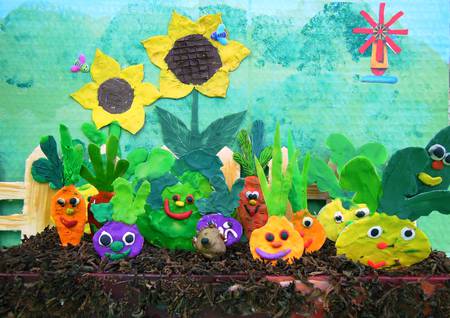
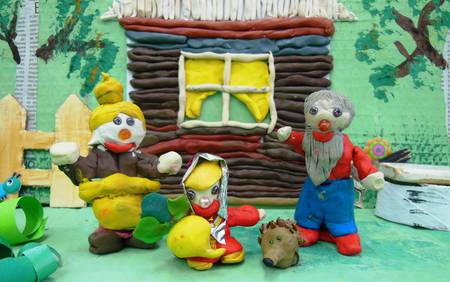
We love to watch cartoons. Cartoon is something good, fabulous and magical.
Cartoon is a multiplicative or animated film. The film created by animation (animation).
I wanted to know how the cartoons are created, and create your own cartoon. Find out how "come to life" and move pictures.
In order to create a cartoon, I need to identify the demand of this project. To spend the survey of students and their parents, in order to identify their attitude towards cartoons. After that, learn the process of creating a cartoon and create your own.
I suggested If there is an accessible technical support, then create a cartoon is available even to a child.
Subject of study: Animation
Methods:
Search for information on the Internet
View video creation of cartoons
Comparison, observation, analysis of the information received
Creating your own cartoon
What is animation?
An animation - (from lat. Multiplicatio) - multiplication, an increase is the process of creating moving images.
The term "multiplication" is used exclusively in Russian cinema as a synonym for the term "animation". Translated from Latin - "Anima" means "soul". So "animation" is nothing but the "revival" or "animation".
Practical part
I was wondering how our peers and their parents belong to cartoons.
The survey participated 55 students of 1-3 class of the Yagul school. Considering the results of the questionnaire, found out that most children love to watch cartoons (46), some look at them sometimes (8), and only 1 do not watch the cartoons at all. So most children love to watch.
Almost all the guys (46) indicated that they want to learn how to create cartoons.
Rentifying the profile of parents, I received the following results: out of 47 people 33 gladly watch cartoons and only 14 indicated that sometimes watching cartoons. 26 parents indicated that they want to engage in the creation of cartoons.
After the survey, it turned out that most of The surveyed not only love to watch cartoons, but also want to learn how to create them.
The process of creating a computer animation cartoon
I decided to create a computer cartoon.
I found out that computer animation does not require special costs of material compared to plasticine and puppet cartoons. The main thing to choose a suitable and understandable program for creating a cartoon. Considered various finished programs On the Internet, but none of the programs arranged me. Some programs were complex to use, others offered to work only with the finished version of the backgrounds and objects. And I wanted to create something my own and unique and at the same time affordable for other guys. After long searches, I came to the decision that the cartoon can be created using a well-known program that is practically all of our friends, POWER POINT..
This program offers great opportunities not only to create a background, but also an independent choice of various objects and figures, as well as installation of these objects. of various types Animation. What fully allows you to show our fantasy.
The idea of \u200b\u200bcreating a cartoon appeared after reading the story of A. Mityaev "First Flight". An animated cartoon is shown an event that occurred on April 12, 1961. Yuri Alekseevich Gagarin first flew on the Rocket "East" around the Earth. It was a significant historical fact. In honor of this event, poems wrote, wrote songs. All boys of that time wanted to become cosmonauts. Yuri Gagarin was a hero who paved other people the road into space. He went around the earth, safely returned back to Earth. What significant event It was for that time. In 2016, we celebrate the 55th anniversary of the first flight of a person in space.
To create a cartoon, I needed a laptop, with Internet access and POWER POINT program.
I needed the following objects and characters. Rocket, clouds, landing capsule were composed of standard figures that are provided by the Power Point program. An image of astronaut, children, land, sun, colors were downloaded from the Internet and changed using automatic removal of unwanted parts of the picture (Appendix No. 4). The background of the cartoon is taken from the finished designs of the slides of the Power Point program or downloaded from the Internet.
The cartoon was created from the sequence of slides. In total, the cartoon turned out 18 slides. On the slide for each object, an animation of different types is made: swing, moving, rotation, appearance, pop-up, etc.
Presentation slide show is automatically configured. Music Alexander Kamluk - Cosmonautics Day (Rock Popourry) is selected in such a way that it corresponds to a given presentation theme. Reproduction musical accompaniment Configured automatically at the time of displaying all slides.
The presentation is converted (i.e. changed) using the SMART PPT Converter program to AVI format. (Appendix No. 8)
And this long-awaited hour came, which I waited so long. Many times I looked through my favorite first cartoon.
Creating an animation cartoon - very painstaking work!
Based on my work, you can draw the following conclusions:
1. Since the release of the first cartoon has passed a lot of time, but their popularity does not fade.
2. Knowing the main secrets of creating cartoons, if available technical support, you can create your own cartoon available to all.
Thus, I managed to achieve our goal of our research. The hypothesis confirmed at the beginning of the study by us. The knowledge gained during the study made it possible to increase the interest of the surrounding animation of animation, learn a lot about the first flight into a human space.
School Scientific and Practical Conference
junior schoolchildren "I am a researcher"
How are cartoons born?
GBOU SOSH №8 PGT Alekseevka G. About Kinel Samara region.
Leader: Kharitonova Lyudmila Ivanovna,
teacher primary classes
GBOU SOSH No. 8 PGT Alekseevka G.O. Kinel Samara region.
2014
Content
1. Introduction............................................... .................................................. ............ 3.
2. Main part
2.1. History of animation ................................................ ..........................
2.2. Multiplication types ................................................ ..............................
2.3. Creating a cartoon ................................................ .............................
3. Conclusion ............................................... .................................................. .....
4. Literature ... ............................................ .................................................. .....
1. Introduction
I love cartoons very much. It always seemed to me that cartoon heroes Absolutely real and that they live in the TV. I really wanted to meet them and make friends so that they live with me together, so that we were playing and having fun, and I would care about them. A little matured, my parents told me that the cartoons make multipliers artists, but how they make cartoons, it was not clear to the end.
So I chosetheme For your work: "How are the cartoons born?" This T.eMA is relevant because today big variety cartoons. We are all constantly looking at the cartoons of foreign and domestic production. They teach us to be kind, responsive, bold and friendly. Many guys prefer to watch TV.
purpose of work : Creating a cartoon at home.
Tasks Over which I worked:
Get acquainted with the history of animation.
Find out what types of animation exist.
You can find out if you can create a cartoon at home.
Create your cartoon.
Research methods:
Interview
Questioning
Studying literature
View Stock Footage
Experiment
Hypothesis:
At home, you can create a cartoon, possessing certain knowledge.
2. The main part.
2.1. Cartoon history.
When the first cartoons appeared exactly unknown. From a long time, people tried to "revive" drawings. Scientists were found cave drawingswhere animals were portrayed with a lot of legs overlapping each other. The first mention of animation (revitalization) dated 1 century BC. e. (Appendix. Photo 1).
At the beginning of the second millennium N. e. Shadow ideas appeared in China. They were very similar to future cartoons.
In the middle of the 15th century, artists began to appear, which entertained the people with moving images, applying special mechanisms for this.
At the end of the 19th century, the self-taught inventor Emil Rayno invented and presented the projector to the public, which used the principle of sequential transmission of images - one after another. He was called Prasinoscope.
The first and most primitive optical device arrived on sale was called Taumatrope (which means "rotating miracle"). I decided to make this device myself and now it will demonstrate it. (Attachment 1). It was invented by John Paris in 1826 and consisted of a cardboard disk with a pattern on each side and ropted handles at the edges. When the disk rotated, individual drawings merged into a single image.
Another old animation toy, whose layout I will imagine you now, is called Zootop (translated from greek - "Wheel of Life"). It is he who is known worldwide as a progenitor of animation. It is a cylinder with vertical slots, fixed on the rotating axis. The tape is placed inside with a series of consecutive frames. The drum is spinning, and the frames are connected to the animation. (Appendix 2).
2.2. Views of animation
Puppet animation.
Motherland Puppet Cartoon is Russia. In our country in 1912, a puppet film was created about the life of Zhukov with a biologist Vladislav Oldevich. The process of creating one doll cartoon is very laborious and consists of several stages.
At the first stage, the script is written, then the images of the characters are invented. According to drawn characters, dolls are created, shoes clothes and shoes. The most time consuming is the stage of creating dolls, because each of them should have mobile hands, legs, head, torso, eyes and lips. (Appendix 3).
Inside such a wire frame doll. When dolls are ready and dressed, multipliers start shooting the phases of movement corresponding to the plot of the future cartoon. Previously, dolls were made of wood (head). For example, Cheburashka and Crocodile Gena - "Lime Heads", that is, their heads were made from Linden.
Removing one episode takes from several days to several weeks.
One minute of the cartoon contains up to 25 frames, and in one day only 5 seconds of the cartoon is removed. The whole cartoon is a few years. With the arrival of computer technology animation, puppet cartoons are removed much faster.
Hand drawn cartoon.
As mentioned earlier, the history of drawing cartoons originates in the 19th century. How are hand drawn cartoons are created, and who creates them?
First, the screenwriter writes a script. It contains the plot, and dialogues, and description external view Heroes, and even the landscape in the background.
Then the director makes a storyboard - drawings in the form of comics. Of these, then there is a whole cartoon. (Appendix 4).
Following this, an animator is accepted for work. He revives characters. Its work includes not only the movements of the heroes, but also turns of the head, laughter and tears. Now pour the characters with paints. This is done using a computer. Then impose the heroes on the background.
To make a cartoon, remove each frame separately. After that, everything is mounted using computer technologies.
Hand drawn animation is also a very long and time-consuming process, occupying several years.
Plasticine animation
Normal children's plasticine is a magical material, with which you can create a miracle.
There are 3 techniques in which plasticine cartoons are removed.
1. Opening.
Characters are made flat and placed on several floors of a cartoon. Characters slowly move and remove the cartoon footage, a few mm changing the movements of the hands and legs. (Appendix 5)
2. Volume Plasticine Animation.
Characters are located in the volumetric scenery. It is more difficult to revive such heroes. The hardest thing is to force the hero to speak. To do this, he must have a moving mouth. After the artists create decorations too from plasticine.
When everything is ready, on the computer proceed to the installation. To create one 15 minute cartoon requires a whole year.
3. Combined animation.
Characters are removed on a separate background: it is green, then blue, and then with the help of mounting them inserted into the detached plasticine worlds.
To grow flower, in the plasticine animation they are resorted to reverse shooting. First they make the whole flower, and then take off the petal, removing the frame behind the scenes. After the received frames turn over and shown in the reverse order.
Sand multiplication.
Everyone can draw sands: and adults and children. First, the sand needs to be sifted to cleanse from large pebbles. It can be made color. For this sand paint gouache. The main tool in creating a cartoon - palm and fingers.
Draw sand on a special table. The surface must be glass. At the bottom under the table there should be a daylight lamp.
You need to draw in bulk. We gain sand into the fist and pour on the surface, giving the form subjects. Excess sand is cleaned with palm or fingers. Everything is fixed on the camera or camera, processed using a computer, impose music. Cartoon ready! (Appendix 6)
2.3. Creating a cartoon
I decided to try to create a cartoon houses, based on the Russian folk tale "Ryaba chicken" using the hand drawn animation technique. I chose this fairy tale, because my younger Brata She really likes, and I thought that he would also be interested to see the cartoon I did himself.
To do this, I needed: cardboard, markers, paints, scissors, sewing needle, strong threads, computer and digital camera. (Photo application 7.)
Then we equipped with my mother workplace To create a cartoon. (Appendix 8.)
Cartoon production began!
at first, we painted on a large cardboard sheet and decorated with paints the background on which the cartoon will be filmed;
then painted the details of the dolls, they roamed them with markers and cut out;
joined the details of dolls using a sewing needle and strong threads, imitating hinges;
On computer B. windows program Movie Maker with Lyudmila Ivanovna mounted a cartoon and put the music. (Photo application 11.)
Cartoon ready!
3. Conclusion.
During the work, I found out that at home you can create your own cartoon. And I also learned that the creation of a cartoon complex and time-consuming process. Its creatures on film studios are engaged in people of many professions. They work on cartoons for years (it is necessary to pay tribute to their excerpt and efficiency). Creating your cartoon, these qualities came in handy and me. And who knows, maybe I, when I will become a multiplier, too.
4. Literature.
1. Kapkov S.V. "Encyclopedia of domestic animation" Ed.: Algorithm, 2006, 810 pp.
2. Simon Mark "How to create your own cartoon. Animation of two-dimensional characters ", 2006, 336 pp.
3. Multiup.ucoz.ru.
Applications.
Marianna Rosova
Creative project "Cartoon do-it-yourself"
Dear Colleagues! I invite you to a presentation creative project "Cartoon with your own hands." In the framework of this project, my children with children with their own cartoon in Russian folk fairy tale "POH". Children worked with great interest on creating a cartoon: worked, played, talked, created everything with their own hands: scenery, characters. They showed independence when creating crafts, characters, scenery, used familiar techniques, applied skills in practice that they have already been formed. Studied new interesting techniques, acting. Tried yourself in the role of scripts, artists-illustrators, decorator artists, actors. Parents also connected to work, and in general, for the project we had four cartoons. I will be glad if someone inspires our project!
Type of project - Long-term, joint children-parent creative project.
Project participants: Team teacher, children, parents.
The essence of the project:molding and using the skills of modeling, drawing, designing, execution of appliqués and crafts, children make characters and scenery for games, performing performances and shooting cartoons.
Purpose:Remove the secrets of creating cartoons. Create a cartoon with your own hands.
Hypothesis: We suggested that if we reveal the secrets of the creation of cartoons, we can create your own cartoon yourself.
The relevance of the project: IN last years A certain vacuum has arisen in high-quality domestic cartoon for children and young people, and modern television space was flooded with low-line Western cartoons: or vulgar, or promoting aggression, anger and immoral behavior, calculated mainly at schoolchildren and adults.
In our market, the cartoons based on their creation began to appear on our market. classic school domestic animation. therefore this problem It is educational and educational in nature, since further deterioration of the situation can lead to the spiritual degradation of young people. Because the consciousness of the nation is formed from the set of worldviews of various social seats of citizens of Russia and, first of all, youth of the country, I want to emphasize the importance and relevance of this project.
Now, thanks to new technologies and modern equipment kindergarten, preschoolers from passive consumers of cartoons, become active participants in the creation of a cartoon, i.e. try themselves in the new capacity. Mastering and using the skills of modeling, drawing, appliqués, design, children make characters and scenery for filming their own cartoons; Get acquainted with the device photo and video techniques; invent scripts; Directly participate in shooting process; They voiced their heroes - there is a creation of an adult and a child. Perhaps in the future, performing the creators of cartoons, they are in different ways to choose and evaluate the cartoon.
Tasks:
Educational:
To acquaint children with the history of the emergence and development of animation.
Introduce children with multiplication films technology.
Expand the knowledge of children about professions: screenwriter, director, multiplier artist, operator, sound engineer.
Developing:
Develop creative thinking and imagination.
Form art skills and skills.
Form the skills of connected speech.
Raising:
Rise interest, attention and sequence during the creation of a cartoon.
Rail a aesthetic feeling of beauty and harmony in life and art.
We instill a responsible attitude towards your work.
Forms of work:
View the "Soyuzmult Film" presentation.
"Cartoon Wizards" (familiarity with professions: screenwriter, director-multiplier, multiplier artist, sound engineer, operator, etc.)
"Cartoon Secrets" (acquaintance with the world of animation).
"Game - a trip to the station of the country of the Multi-Putty."
Viewing videos "Meeting with a cartoon and artist Malyavin."
View cartoons (acquaintance with cartoons: plasticine, drawn, puppet).
Conversations "The History of the Cartoon", "How to remove the hand-drawn cartoon", "what are the cartoons".
"Travel to the past is the childhood of parents" (alternative to the cartoons were diamers).
Viewing Films.
Experimentation with paints - obtaining different shades by adding white paint.
Work on the background, using unconventional drawing methods.
Work on the scenery to the cartoon using unconventional drawing methods.
Lrack heroes from plasticine.
Drawing "Favorite Cartoon Hero".
Drawing stories in pictures (inventing stories and drawing up mnemotable "young scenariors").
Mysteries on cartoon characters.
Quiz "Connoisseur of cartoons", "in the country of multi-pulse."
Drawing vegetables on a tray, compiled by a semit.
"Vegetables on the garden" - the plasticography method.
Work on the screensaver, the ending - microGroups.
Shot of the screensaver.
Retelling fairy tales, telling on roles.
Drop the fairy tale.
Drawing up the story on behalf of the subject "revived subjects."
Games "Journey to the world of emotions" (the ability to distinguish the emotional states of the characters); "Guess the character on facial expressions and gestures."
Record fairy tales.
Consultations for the Parents "Cartoon Secrets", "Methods and techniques of non-traditional drawing methods".
Parent meeting "Children and Cartoon".
Stages of work:
Stage I:
The choice of theme.
Setting goals.
Nomination hypothesis research.
Search for multiplication material.
Survey of children on this topic.
Studying the history of animation.
Types of cartoons.
Studying the process of creating a cartoon.
Development of a cartoon work algorithm.
Preparation of materials and equipment necessary for the implementation of the project.
Stage II:
Creating a creative group of parents interested in this topic.
Immersion in a fairy tale.
Striping.
Development and creation of characters and scenery.
The revival of the characters.
Foaming the plot.
Cartoon shot.
Installation of the footage on the computer.
Sound (role distribution).
III Stage:
Determining the formation level of generalized training skills.
Cartoon premiere. View (work outfit).
Final exercise on the topic "Manufacturing of posters".
Parent meeting on the topic "Children and animation".
Presentation of the project.
Expected Result:
Within the framework of the project "Cartoon DIY", children received certain knowledge, skills and skills:
Manifestation of emotional responsiveness, development of thinking, imagination, the ability to express their feelings with the means of art.
Development of personal qualities: independence, initiatives, mutualists, involvement with common cause, responsibility, respect for each other, self-esteem.
Development of communication skills, manifestations of creative independence, activity in creating an image, the development of small motility of the hands, the ability to show their talents. This gave a new impulse of game activity, children borrow fabulous stories and begin to make the masters of heroes themselves.
Thus, the use of project activities gives us the opportunity:
Encourage children to achieve one or another result;
Achieve a certain and real goal, product of project activities;
Use different types of productive activities in one project;
Show cognitive, creative, business activity, independence, as well as the knowledge and ability developed earlier;
Form communicative skills and moral qualities.
Children appears the opportunity to make their contribution to the common cause, to show individuality, conquer a certain position in the group.
The result of participation in the project is also becoming fragments of thinking, the development of creative potential, the formation of the ability to observe, fantasize, compare, worry seen, to reflect their impressions in creative work, as well as improving the skills of communication in the team and socialization.
Cartoon "Mouse and Sun" Hosted Family:
Cartoon "Cat and Flower" Family Filippov:
Film "Cat, Fox and Rooster" Minchenkov Family: